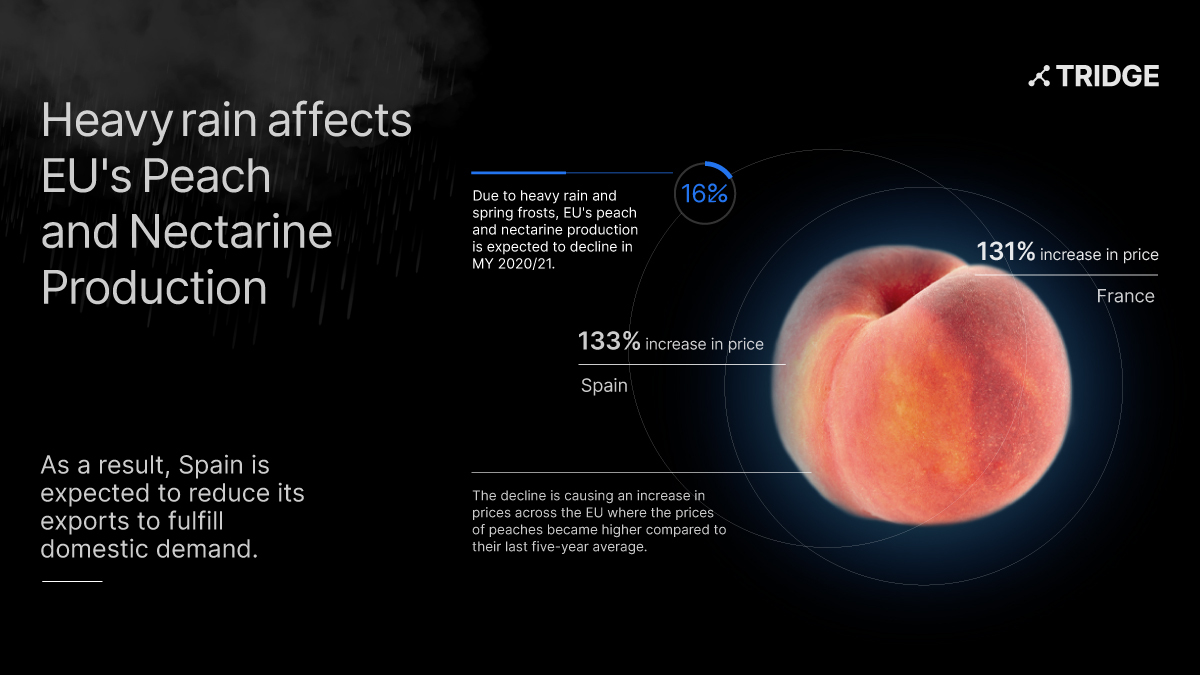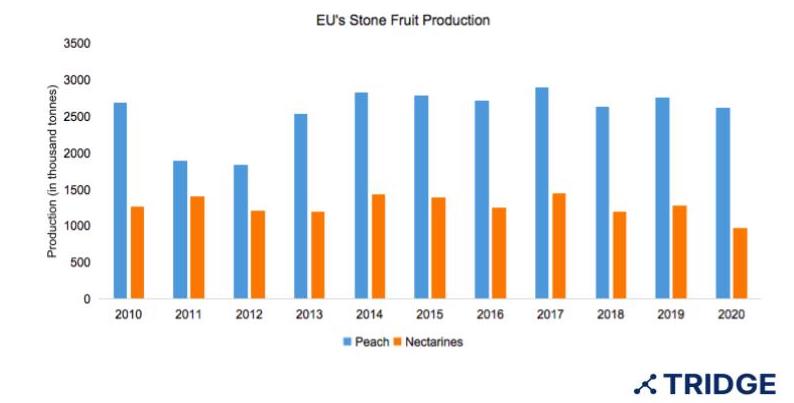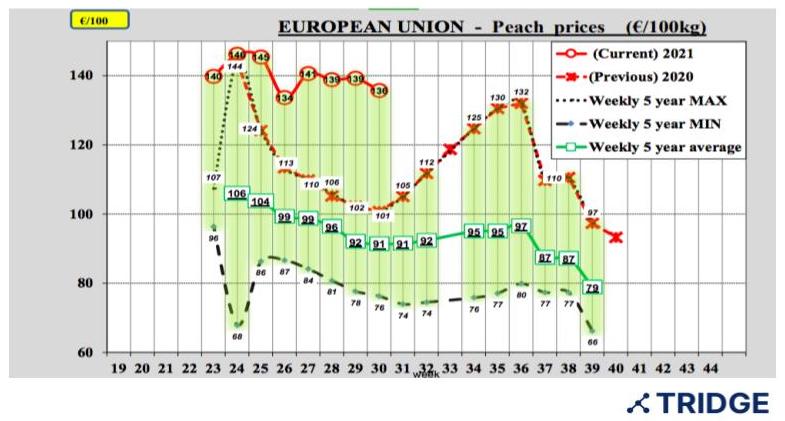Heavy rain affects EU's Peach and Nectarine Production

The European Union is a popular and thriving region for growing stone fruits like peaches, nectarines, and cherries. Countries like Spain, Italy, Greece, and France dominate the peach and nectarine production within the EU, followed by Hungary, Portugal, Bulgaria, and Poland who represent a small share of stone fruit production in Europe. Within the EU, Spain is the largest producer of peaches and nectarines and it is the second-largest producer in the world with a share of 6% in the global production. The country also holds the position of largest exporting country with a share of 44.4% in global exports. However, an excess surplus of domestic peaches and nectarines has put downward pressure on the market price and the Spanish peach and nectarine planted area by 15% in 2020 to around 72,000 ha.

Source: DG AGRI DashBoard
The marketing year for peaches and nectarines runs from January to December in the EU. For MY 2020/21 the area planted for peaches and nectarines was around 202,000 hectares in the EU, which is 6% less than the previous year. The fall in the area resulted in speculation that the production will fall to 2.67 million metric tons,16% less than the previous season. Unfavorable weather conditions along with strong spring frosts affected the blossoming of the fruits and reduced the quality as well as quantity. Spain’s forecast for peach and nectarine production is down by 20% on its five-year average while Italy’s peach and nectarine production is projected to be 45% less than its five-year average. Peach and nectarine production in Northern Italy was particularly badly hit by the April frosts, with growers there losing 70% of their crop.
As production forecasts for peach and nectarines fell, the prices of the fruits increased significantly across the producing countries. According to the EU Peaches and Nectarines Dashboard, in week 30 of 2021, EU average peach prices stood at 136 Euros (USD 161.5) for 100 kgs, which is 149% more than the last five-year average and 34.6% more than the same period last year. If the production continues to fall in the coming months, the prices are likely to increase even more in producing regions like Spain, France, and Italy. The prices of peaches were 133% high in Spain and 131% higher in France in comparison to their last five-year average.

Source: DG AGRI DashBoard
Countries like Spain compete for sales within the European market as the EU itself remains self-sufficient in terms of peach and nectarine production. In MY 2021/22, consumption of peaches and nectarines in the EU is projected to decrease to 2.5 million metric tons in line with lower supply. As a result of falling production, Spain’s peach exports are valued at USD 969 million,22% lower than the previous season.
As a consequence of reduced production volume, EU countries started to source actively from Turkey, Chile, and South Africa, whereEurope usually imports during its off-season. During the MY 2021.22, the EU’s imports of peaches and nectarines from these countries are valued at roughly USD 60 million, showing a 60% increase from the previous year to meet the domestic demand.
Sources
- DG AGRI DashBoard: Peaches and Nectarines.
- Euro Fruit. “Smallest stonefruit crop in 30 years.”
- USDA. Stone Fruit Annual.



